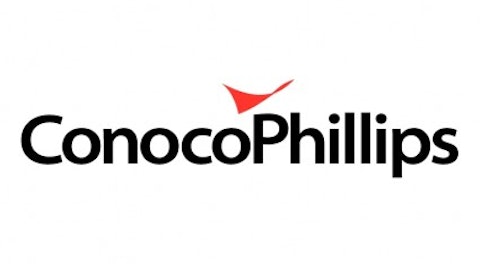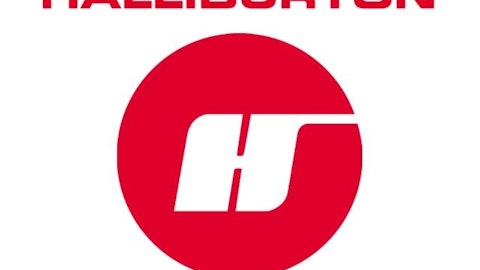Schlumberger Limited. (NYSE:SLB), the big enchilada of oil-field services, did more than simply kick off reporting season for this industry as last week came to a close. In the process, the company demonstrated once again the benefits of participating in worldwide oil and gas operations.

The numbers
For the quarter, Schlumberger Limited. (NYSE:SLB) recorded earnings of $2.1 billion, or $1.57 per share, an increase from $1.4 billion, or $1.05 per share in the second quarter of 2012. Without one-time items, however, the most recent quarter’s per-share number was $1.15, or $0.05 higher than the consensus among analysts.
Looking at Schlumberger Limited. (NYSE:SLB)’s income statement, the most significant one-time item involved a gain of more than $1 billion on the formation with Cameron International Corporation (NYSE:CAM) of OneSubsea, a joint venture whose charter is the provision of solutions for the subsea market. Schlumberger has a 40% interest in the partnership — which was finalized at quarter’s end — to Cameron’s 60%.
Schlumberger Limited. (NYSE:SLB) was joined in reporting Friday by Baker Hughes Incorporated (NYSE:BHI). However, the smaller company slid below year-ago results and missed on analysts’ expectations. As such, while Schlumberger’s shares rose by 5.4% on the day, Baker Hughes Incorporated (NYSE:BHI)’s dipped by 2.6%.
In addition to its solid quarterly results, an announcement that its board had approved a $10 billion, five-year, buyback program also boosted Schlumberger Limited. (NYSE:SLB)’s share price. An existing $8 billion buyback program will be completed during the current quarter.
The geographic variables
From an all-important geographic perspective, all of the regions in which the company operates contributed to an overall 8% increase in revenues to $11.18 billion. Given the regional variances in activity levels and the lingering slowdown in U.S. onshore activity, it’s significant that Schlumberger Limited. (NYSE:SLB) generates less than a third of its revenue in North America, considerably below the other major services providers.
The company’s overall pre-tax margin rose by 70 basis points. However, the North American margin, at 19.7%, was below the year-ago 20.5%. Conversely, the Middle East and Asia region generated a margin that catapulted to 24.6%, compared with 21.3% for the comparable quarter of 2012. That region benefited from increased drilling activity in China and Australia, along with continued strength in Saudi Arabia and Iraq.
Precisely what does Schlumberger do for its customers?
Schlumberger does a far better job than its peers of providing a look at the sorts of projects in which it’s involved. One result is an improved perception of the significant role the company plays in the production of oil and gas globally. For instance:
- The company has been awarded a five-year, multi-country, integrated services contract by Royal Dutch Shell for drilling oil and gas exploratory wells on a recently commissioned “highly mobile” deepwater drilling rig. The Shell program will eventually involve East, West, and North Africa.
- In China, Schlumberger’s drilling and measurements unit was deployed to drill 20 wells for PetroChina (NYSE:PTR) in an unexplored and technically challenging area in the the country’s West. Despite obvious challenges, through the use of several of its proprietary technologies, Schlumberger was able to reduce the drilling time for PetroChina from an anticipated 67 days to 42 days.
- Exxon Mobil Corporation (NYSE:XOM) has been toiling on Russia’s frigid, remote, and desolate Sakhalin Island for some time. Schlumberger installed a multilateral completions system there for the operator, permitting Exxon Mobil Corporation (NYSE:XOM) to “access new sections of the reservoir by reentering existing wellbores,” thereby increasing overall hydrocarbons recovery.
Foolish takeaway
For my money, Schlumberger, in addition to topping the oil-field services group in size, also constitutes a more compelling investment than any of its multi-services peers. For instance, as technological advancements become steadily more vital to accessing oil and gas in challenging locations, the $1.1 billion the company spends annually on research and development is of far more than passing consequence.
By operating about 25 research facilities worldwide — in such locations as Saudi Arabia, Brazil, and Russia — the company increases its expertise in dealing with varying geologic conditions. And every bit as importantly, it is able to maintain relationships with expanding national oil companies in those and other countries.
Further, Schlumberger’s revenue growth and expansion of margins during the past quarter bode well for its future performances. That’s especially the case given, for instance, “subdued” activity in Angola, due to project delays. That country’s offshore geologic conditions have turned out to mirror Brazil’s pre-salt region, thereby indicating that the West African nation is ripe for significantly expanded operations.
Indeed, at this juncture, it’s difficult to locate a weakness in Schlumberger’s performance or direction. As one who has monitored the company for some time, I suggest that energy-investing Fools place it high on their company watch lists.
The article What Did Schlumberger’s Results Say to Energy Investors? originally appeared on Fool.com is written by David Smith.
Fool contributor David Smith has no position in any stocks mentioned. The Motley Fool has no position in any of the stocks mentioned.
Copyright © 1995 – 2013 The Motley Fool, LLC. All rights reserved. The Motley Fool has a disclosure policy.


